
Your engine relies on steady fuel pressure to achieve the fuel/air mixture needed for vigorous internal combustion. If something like a leak in a fuel line, a bad fuel pressure regulator, or a failing fuel pump causes low fuel pressure, you’ll often notice symptoms such as poor acceleration, increasingly rough idling, sudden stall-outs, and even dangerous engine misfires.
Of course, your car’s fuel system is sophisticated with many components working synergistically to maintain adequate fuel pressure for the driving conditions dictated by the ECU. If you’ve been experiencing low fuel pressure symptoms, ferreting out the exact cause of causes can be tricky.
Though certain causes of low fuel pressure have distinct symptoms that you might be able to troubleshoot on your own. At the very least having a good understanding of the symptoms and causes of low fuel pressure might help reduce the size of the bill your mechanic hands you to fix it.
What Should Be the Normal Fuel Pressure?
Most modern-day cars with a fuel-injected engine have a normal operating fuel pressure between 35 to 65 PSI. The make and model of your car will determine the specific fuel pressure range. You can usually find this information in the owner’s manual or the repair guide for your car.
How to Tell If You Have Low Fuel Pressure: 8 Symptoms to Watch For
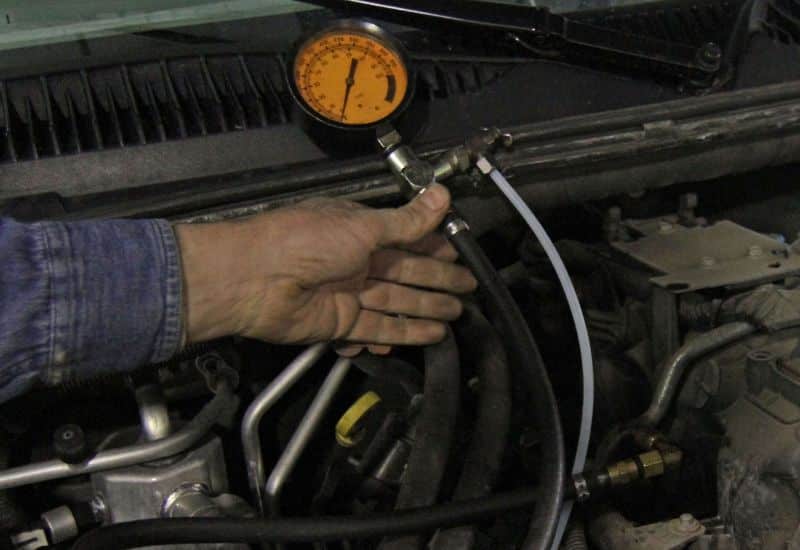
Low fuel pressure symptoms typically manifest as seemingly minor engine performance issues like hard starting and an unresponsive throttle, but can quickly worsen into dangerous engine misfires, stalling, and other damaging engine performance issues. Sometimes the specific symptom or collection of symptoms can give you deeper insight into the cause of low fuel pressure.
Here are eight indicators that your vehicle may be experiencing low fuel pressure and what each of them could signify:
1. Hard Starting
Hard starting, from insufficient fuel delivery, is one of the most common and early symptoms of low fuel pressure. Most vehicles use a higher volume of fuel at start-up to atomize enough gas in order to support a fuel/air mixture capable of maintaining vigorous internal combustion throughout the engine cycle.
Low fuel pressure problems from a failing fuel pump, a badly clogged fuel filter, or a bad fuel pressure regulator tend to deliver sufficient fuel for the moment. This can lead to an engine that cranks then shudders to start for a moment, only to die again. You end up with frustrating moments of hope that ultimately increase frustration.
2. Rough Idling

The imbalance in the fuel/air mixture caused by low fuel pressure often leads to a rough idling engine. If the low fuel pressure is due to a failing fuel pump or a clogged fuel filter the rough idle can quickly turn into a stalled engine.
3. Frequent Stalling
Anytime low fuel pressure starves an engine of the fuel it needs to maintain vigorous internal combustion there is a risk of stalling. You often see low fuel pressure causing stalls when idling for a long time at a red light or when you step on the gas pedal hard to try to accelerate up to highway speed.
4. Possible Fuel Odors
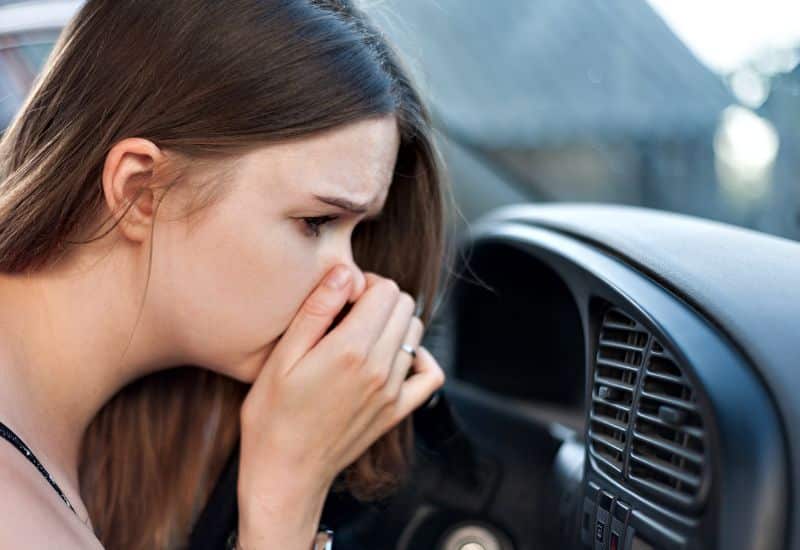
Low fuel pressure can sometimes cause fuel odors if there is a leak in a fuel line, the fuel rail, or the fuel pressure regulator. This usually happens in tandem with poor MPG, hard starting, and frequent stalls. Anytime that you smell fuel odors like this, you need to park the car and leave it parked until you can figure out the cause of the low fuel pressure.
5. Increasing Turbo Lag Time
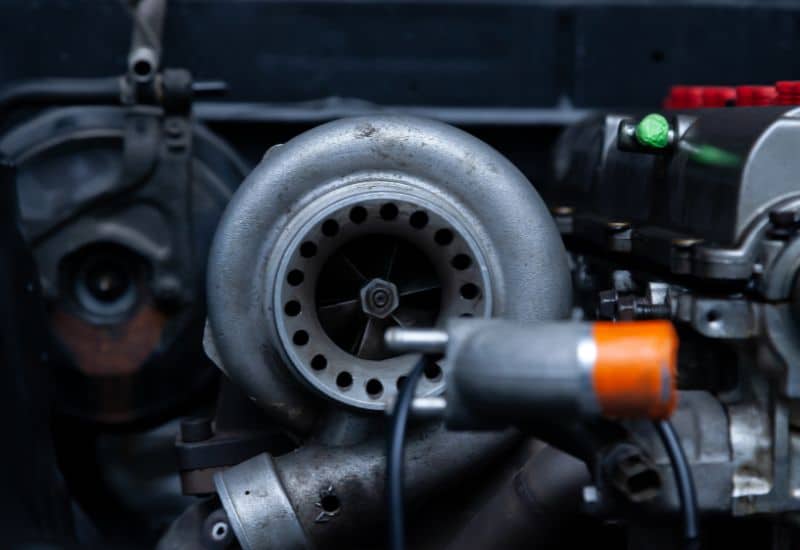
In a car with a turbocharger, a longer-than-normal lag time in the turbo spooling up can also be a symptom of low fuel pressure. The lag time might start out imperceptibly small, but gets longer and longer causing frustration as well as possible driving safety issues when merging into traffic or passing at highway speeds.
It’s easy to mistake this as being a problem with the turbo itself. Though it’s really that low fuel pressure is making it hard for the turbo to generate the pressure it needs to boost engine performance.
6. Poor Acceleration & Noticeable Decrease In Engine Power
The engine feeling down on power with poor acceleration and an unresponsive throttle is a symptom of low fuel pressure that tends to worsen over time. Especially if the poor acceleration occurs in tandem with fuel odors and/or frequent stalling. Though if there aren’t obvious signs of a fuel leak, the engine is down on power, and acceleration is often attributed to a severely clogged fuel filter and/or a bad fuel pump.
7. Low Fuel Pressure Can Also Cause Your Engine To Misfires

Low fuel pressure can cause imbalances in the fuel/air mixture that leads to misfires and unburned fuel passing from the combustion chamber into the exhaust system. Sometimes these misfires can be misinterpreted as or occur in conjunction with an increasingly hard idle. If low fuel pressure causes multiple misfires in a row, the engine might stall out completely, and you will see a flashing or solid check engine light
8. Check Engine Light
Different symptoms of low fuel pressure can cause a fuel warning light to either flash or come on at different times. The good news is that when low fuel pressure causes a check engine light, it also means that the ECU is going to throw one or more codes that can help you accurately troubleshoot what’s causing the problem.
You’ll likely get multiple codes depending on the underlying cause of the low fuel pressure. Though one of the most important ones to key in on is code P0190 which indicates a problem with the fuel rail pressure sensor.
6 Surprising Reasons That Could Be Causing Low Fuel Pressure In Your Car and How to Fix Them
Low fuel pressure symptoms can be caused by a variety of faults in a car’s fuel system. Some like a severely clogged fuel filter can occur in tandem with a failing fuel pump. Whereas fuel leaks, a stuck fuel injector, or a bad fuel pressure regulator can be standalone issues causing low fuel pressure that affects engine performance.
1. A Clogged Fuel Filter
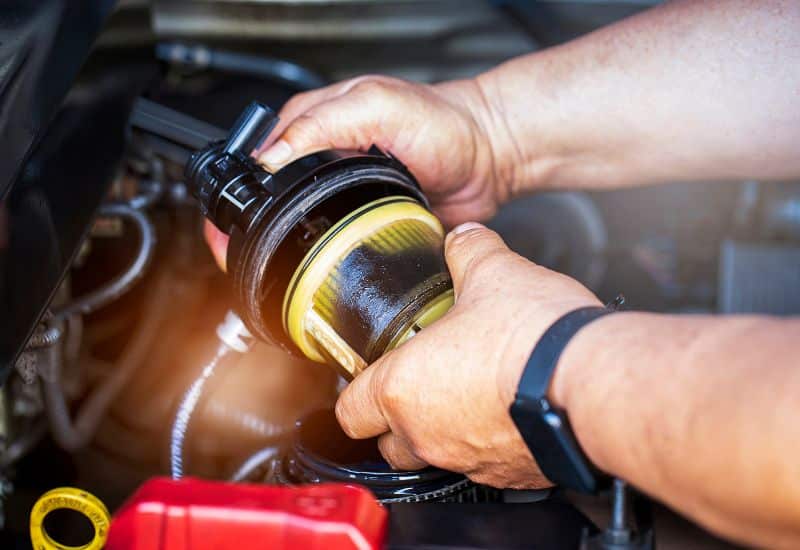
A clogged fuel filter is arguably one of the most common causes of low fuel pressure. Most automakers recommend replacing your fuel filter every 30,000 to 45,000 miles. Though you could suffer a severely clogged fuel filter even earlier if you have a bad habit of running your tank down to the fuel warning light. This can draw tank deposits and particulate matter into the fuel system where they get caught by the fuel filter.
How to Fix a Clogged Fuel Filter
If your low fuel pressure is being caused by a severely clogged fuel filter, the filter will need to be completely replaced. At this point, fuel treatments simply won’t be potent enough to restore proper fuel pressure.
Replacing a fuel filter is something most capable DIY mechanics can handle. Though you can also get it done at a rapid oil change center.
The cost for the fuel filter ranges from $20 to $70.
The cost to have a mechanic replace your fuel filter can range from $50 to $150.
2. A Failing or Bad Fuel Pump
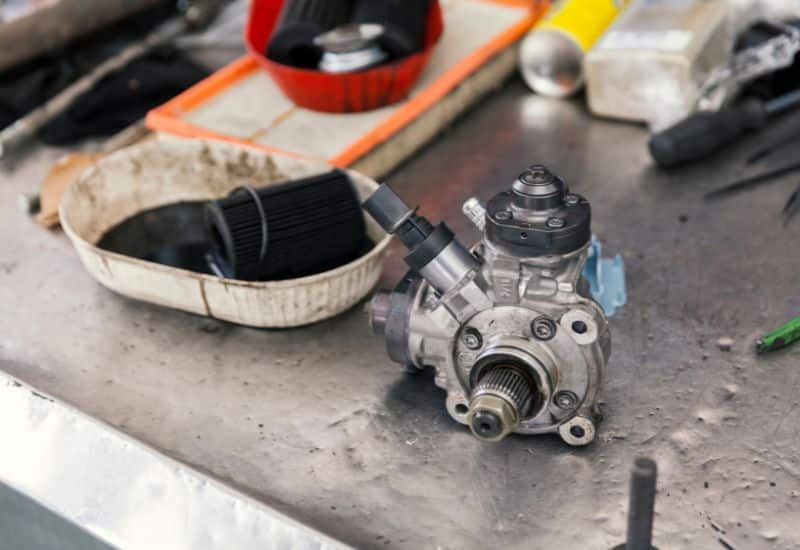
A failing or bad fuel pump is also one of the more common causes of low fuel pressure and can easily be collateral damage caused by a severely clogged fuel filter.
While fuel pumps have a limited lifespan, they are even more prone to failing or struggling to deliver the pressure necessary to meet fuel system demands when the flow of fuel from the gas tank is impeded by a clogged fuel filter.
How to Fix a Bad Fuel Pump
Unfortunately, a failing or bad fuel pump that causes low fuel pressure is not the sort of thing most DIY mechanics can replace on their own.
The cost to have a mechanic replace a fuel pump can vary wildly from as little as $250 to as much as $1,000. Though the real-world average you should expect for a total fuel pump replacement with a new fuel filter and clean bill of health for your fuel system is around $500.
3. Fuel Leaks
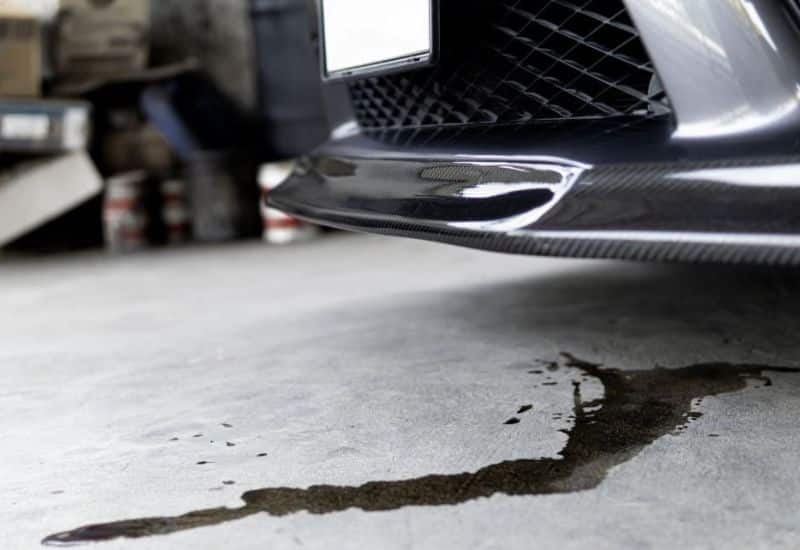
Fuel leaks are another common cause of low fuel pressure and one that is usually pretty obvious by the gasoline odors it produces. Though finding the fuel leak isn’t always easy.
A damaged fuel line in a hard-to-reach part of the vehicle can leave gas dribbling down lines and through cracks that are hard to find.
A fuel leak from a failed diaphragm in the fuel pressure regulator can also be hard to find, as it tends to pass into the vacuum hose. Though this often manifests as fuel odors inside the cab as well as in the engine bay, which might help you narrow it down.
A fuel leak from a stuck-open fuel injector will usually also leave rainbow fuel deposits on wet pavement under the engine bay when you pull out of a parking spot.
How to Fix a Fuel Leak
Most of the time a low-pressure problem caused by a fuel leak requires a mechanic to fix or replace the damaged component. Though you might be able to patch a minor fuel leak in a fuel line with an epoxy patch kit and the following steps.
Our Product Choice: Permatex 84334 Fuel Tank Repair Epoxy Stick
4. A Stuck Fuel Injector
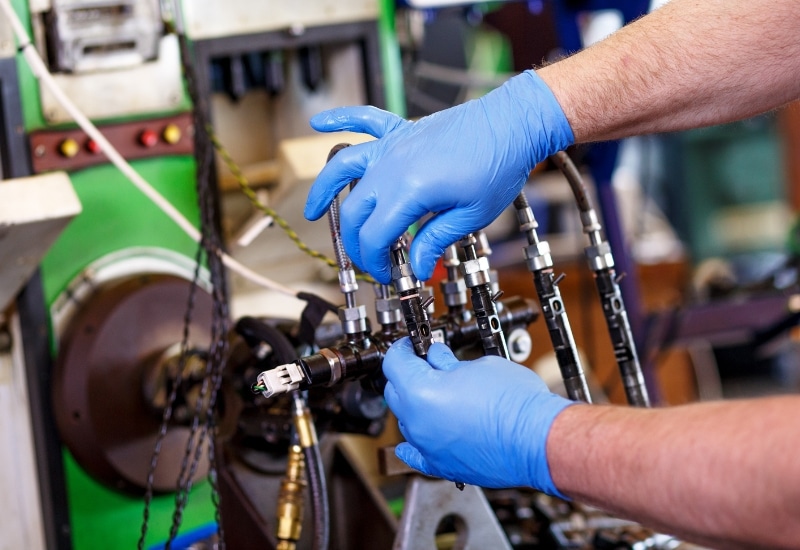
Sometimes a stuck-open fuel injector can also be the underlying cause of low fuel pressure. When this happens the solenoid in the injector doesn’t retract and fuel is continuously poured into one single cylinder. This reduces the available pressure of fuel for the engine’s other cylinders.
When a fuel injector is stuck open, you often suffer increasing misfires, poor MPG, and hideous black smoke coming out of the exhaust. In a severe case, the fuel injector might start leaking, which will cause fuel odors in the engine bay, but not in the cab. You’ll also notice rainbow streaks on the pavement after you pull away.
Most of the time a stuck-open fuel injector will also cause the check engine light to come on. This usually causes it to throw a misfire code P0300 through P0308 depending on which cylinder has the stuck-open fuel injector.
How to Fix a Stuck Fuel Injector
If a stuck-open fuel injector is the cause of your low fuel pressure, the problem is likely so bad that you’ll need to have the fuel injector replaced. This is something that pushes the limits of what a DIY mechanic can handle. Though if it’s just a single fuel injector that needs to be replaced the cost to have a professional mechanic handle it shouldn’t be too bad.
The cost to have a professional mechanic replace a fuel injector should be between $120 to $200.
5. A Bad Fuel Pressure Regulator
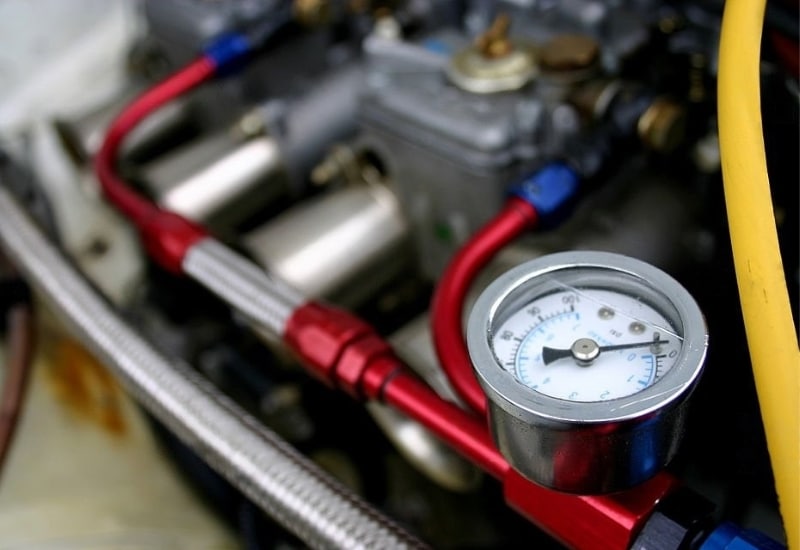
A bad fuel pressure regulator with a leaky diaphragm can also cause low fuel pressure. When this happens the fuel rail sensor and the duty cycle of the engine assigned by the ECU are out of balance. A small volume of fuel leaks out of the pressure regulator’s diaphragm rather than being delivered to the fuel injectors.
You’ll often notice poor MPG, poor engine performance, hard idles, and fuel odors in the engine bay as well as in the cab of the car. If it is the fuel pressure regulator’s diaphragm leaking, you will also notice fuel in the vacuum hose attached to the regulator.
How to Fix a Bad Fuel Pressure Regulator
Fixing a bad fuel pressure regulator that’s causing persistent low fuel pressure calls for complete replacement. This is something that a modestly skilled DIY mechanic can handle for the part cost of $125 to $175.
If you feel replacing a bad fuel pressure regulator is beyond the depth of your skills, there’s no shame in bringing it to a mechanic.
The cost to have a mechanic replace a bad fuel pressure regulator causing low pressure ranges from $300 to $500. The final bill might be on the higher end of the range if your fuel pressure regulator is integrated into the fuel pump
6. A Bad Fuel Pressure Sensor
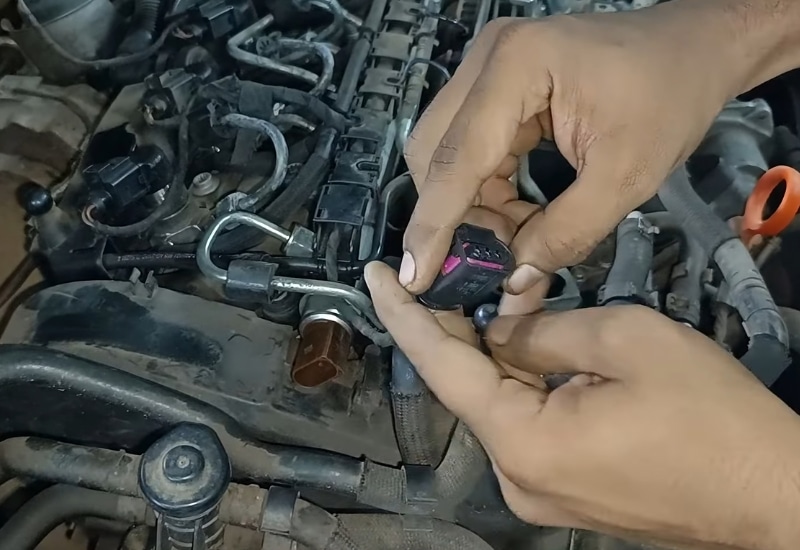
A bad fuel pressure sensor or fuel rail sensor could also be the cause of your low fuel pressure. It’s designed to read the pressure in the fuel line and send that information to the ECU which then alters the duty cycle of the engine to make sure consistent fuel is delivered for a balanced fuel/air mixture.
When the fuel pressure sensor starts to fail, it sends the wrong information or no information to the ECU. This can affect the duty cycle leading to low fuel pressure throughout the fuel system leading from the fuel pressure regulator to the fuel injectors.
If a bad fuel pressure sensor is causing your low fuel pressure problem, you’ll often notice a decrease in power and poor MPG. If your car has a turbocharger, you’ll likely notice increased lag times.
If a bad fuel pressure sensor causes the check engine light to come on, it will likely throw a code P0087 which indicates the Fuel Rail/System Pressure is Too Low.
How to Fix a Bad Fuel Pressure Sensor
You can have a professional mechanic replace a bad fuel pressure sensor for $100 to $250. Of this, roughly $50 to $100 will be the cost of the part. Most people choose to have a mechanic do it, as there is a fair amount of fuel pressure involved, and you have to expose the fuel system.
Though a modestly capable DIY mechanic can replace their own fuel pressure sensor to save $100 or more in labor costs.
How to Prevent Low Fuel Pressure Problems
Routine maintenance and thoughtful driving habits are the best way to prevent low fuel pressure problems.
1: Replace the Fuel Filter on Time
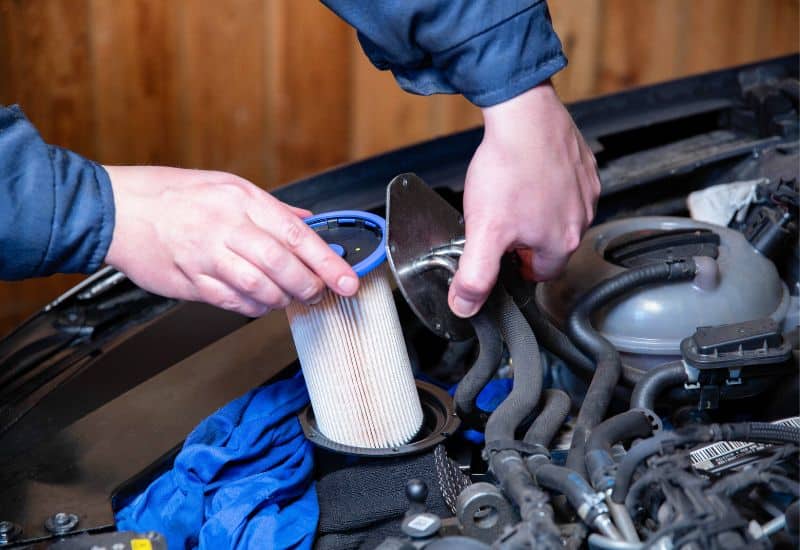
This starts with making sure you are replacing your car’s fuel filter per the manufacturer’s recommended schedule. Replacing the fuel filter on time will then go a long way toward preventing fuel pump problems.
2: Refill Before a Quarter Tank
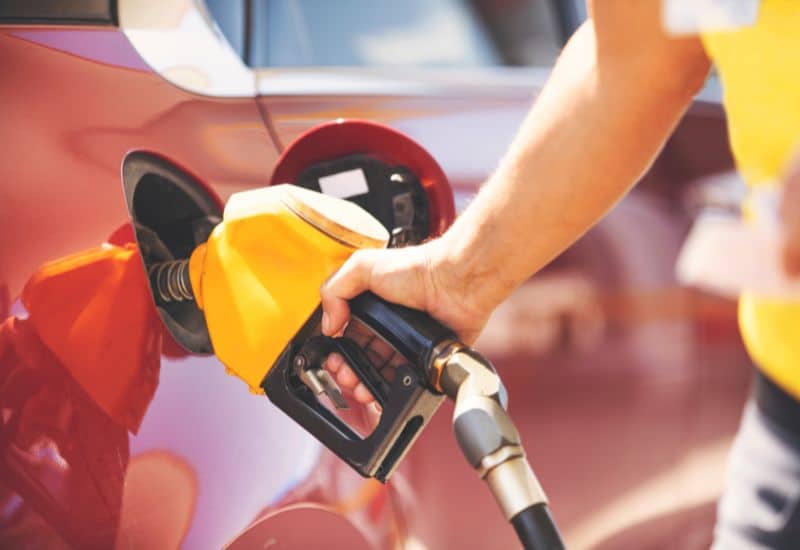
Another way to prevent low fuel pressure, and maximize the life of your fuel filter and the fuel pump is to get in the habit of refilling your tank at one-quarter full. The closer you get to the fuel warning light coming on, the more likely tank deposits, particulate matter, and tank varnish are to be drawn into the fuel system.
The fuel filter will do its best to catch them, but even if it does those deposits clogging the filter can stress the fuel pump and might even affect the performance of the fuel pressure regulator.
3: Schedule Routine Maintenance
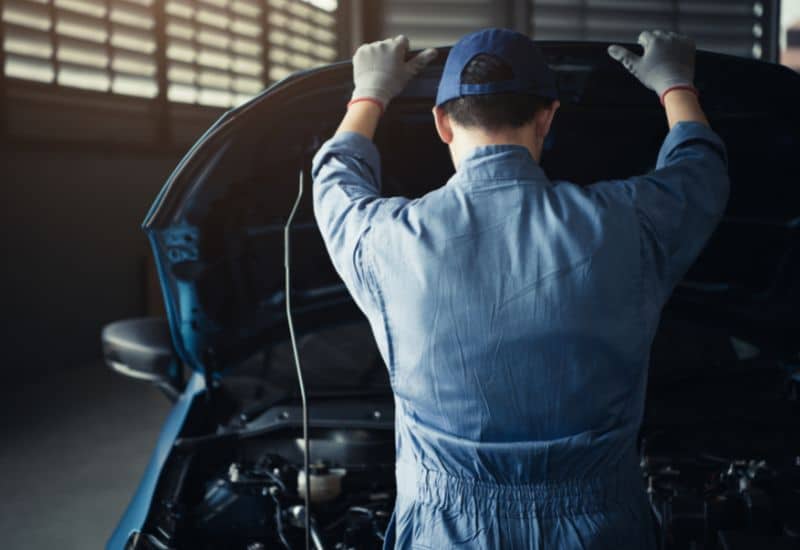
On-time tune-ups, regularly scheduled oil changes, fuel filter replacements, and other general maintenance issues will go a long way toward maintaining the health and proper performance of your car’s fuel system.
4: Use Fuel Injector Cleaner
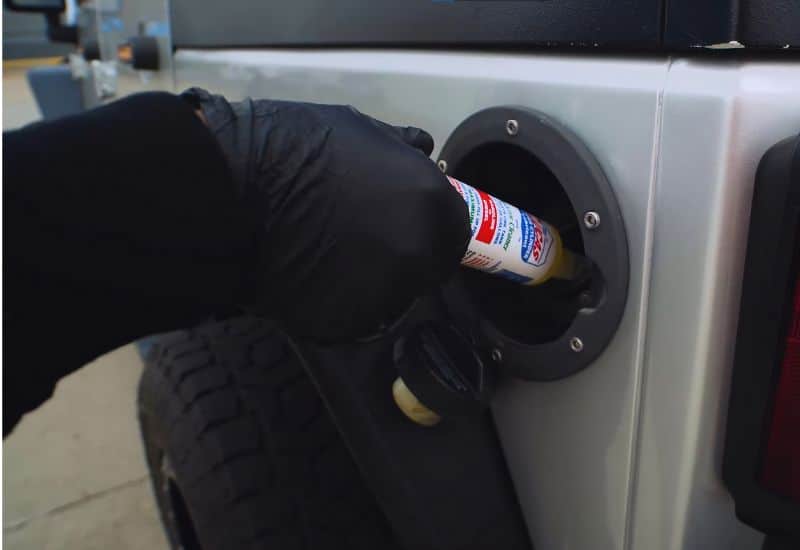
Periodically adding fuel injector cleaner right before filling up the tank will also help maintain a healthy fuel system. The biggest benefit is a reduced risk of suffering one or more stuck-open fuel injectors.
5: Seasonal Underbody Car Washes
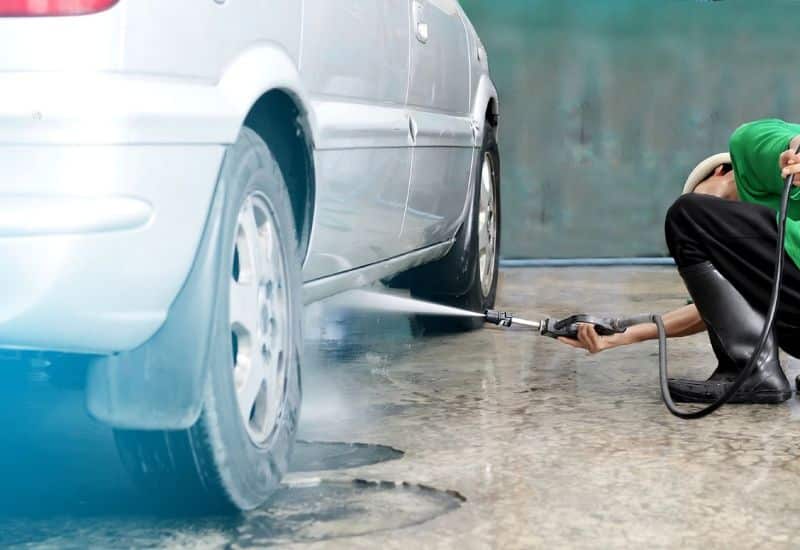
Paying extra for a car wash that includes an underbody cleaning can also help prevent rust on fuel and brake lines. This is especially handy in the spring in northern states to remove road salt as well as in seaside communities where salt spray might affect your car’s underbody.
Frequently Asked Questions
Can You Drive with Low Fuel Pressure?
Driving with low fuel pressure due to a partially clogged fuel filter isn’t necessarily wise, but it isn’t completely dangerous in the short term. Though if the car is misfiring, stalling, pouring black smoke, or you are smelling some serious fuel odors, the cause of your low fuel pressure has likely rendered the car unsafe to drive.
Don’t Let Low Fuel Pressure Slow You Down
Low fuel pressure symptoms are often caused by a clogged fuel filter, a failing fuel pump, or some type of fault in the fuel system causing a fuel leak. Fuel leaks from a damaged fuel line, a failing diaphragm in a fuel pressure regulator, or a stuck-open fuel injector can be very dangerous.
Especially if you’re smelling strong fuel odors, seeing signs of fuel leaks under the vehicle, or the car has been misfiring.
Some of the more simple causes of low fuel pressure like replacing a clogged fuel filter, or replacing a bad fuel pressure regulator can be handled by a modestly skilled DIY mechanic.
Other more serious causes of low fuel pressure such as a bad fuel pump, a stuck open fuel injector, or a hard-to-reach leak in a fuel line, should probably be left to a professional mechanic.
Once the cause of the low fuel pressure has been fixed, you can try to prevent future issues with routine maintenance practices. This includes regularly replacing the fuel filter, as well as keeping the fuel tank at one-quarter full or more.

Written By
Jason Farrell
Jason Farrell is a certified master technician, the editor of Mechanic’s Diary in Pittsburgh, Pennsylvania. He is ASE (Automotive Service Excellence) certified and earned a Bachelor’s Degree in Automotive Technology from Pittsburg State University. With nearly 18 prior years of experience in the automotive field, he has extensive knowledge about Domestic, European, and other foreign makes and models of cars and light trucks. Jason’s experience working as a technician and service manager at dealerships, gave him the experience and know-how of most aspects of inspection, diagnosis, and repair from engine and drivability to electrical, HVAC, brakes, steering and suspension and everything in between.
